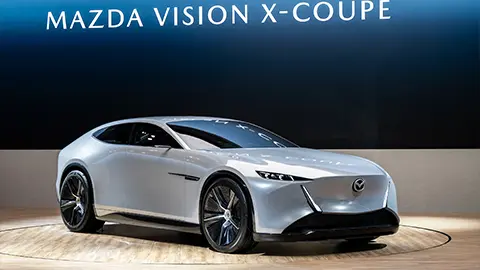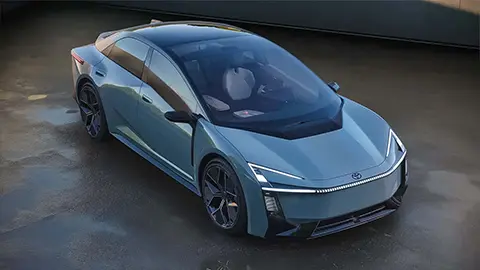Porsche Mission X: An Ultra-Fast, Ultra-Efficient Hypercar
Porsche has a history of turning its innovative, futuristic concept cars into production vehicles which feature pioneering technology that eventually shows up on more mainstream vehicles. From turbocharging to performance-based all-wheel drive, adjustable suspensions, and electronic controls, Porsche flagship vehicles are always ahead of their time. And with the new Mission X concept car, Porsche is showing off its first hypercar with high-performance, high-efficiency electric powertrain.
Porsche has not yet shared details on how many motors the Mission X has, what their power output is, the size of its battery, or its estimated range. You’d expect that from a concept car. But it’s already talking about lofty performance figures. In order to live up to the legacy of its predecessors, the technical targets for its latest hypercar are impressive. A full EV, the Mission X would have to:
- Be the fastest road-legal vehicle around the legendary Nürburgring racetrack in Germany
- Have an incredible power-to-weight ratio of about one horsepower per kilogram – implying huge horsepower but also low weight
- Create aerodynamic downforce well in excess of anything the company currently sells
- Offer world-beating charging performance, which means charging twice as fast as the company’s current frontrunner, the 800-volt Taycan Turbo S
900 Volt Electric and Innovative Battery
While Porsche is light on technical details at the moment, it has shared that the Mission X runs on a new 900-volt system architecture, higher than any current EV available. Higher voltage allows the use of thinner, lighter wiring, which improves performance as well as charging speed. The current Taycan models, as well as vehicles like the Hyundai Ioniq 5 and Ioniq 6, Kia EV6, and Audi E-Tron GT, offer 800-volt systems, so the 900-volt system is a step beyond.
Because a super sports car has to be low to the ground, the Mission X foregoes a typical EV architecture, which packages the high-voltage EV battery under the floor of the car. Instead, the battery is installed centrally, behind the vehicle’s two seats. Porsche calls this layout “e-core,” and it centers the mass of the battery within the wheelbase of the car. Much like the placement of a gasoline engine in the middle of a car allows for excellent agility, the battery’s location should endow the Mission X with amazing handling and braking performance.
Porsche Mission X: Organic, Fluid Design
Unlike most hypercars, which are incredibly angular and aggressive, packed with vents and scoops, the Mission X looks almost subtle. Its low-slung body is topped with a relatively upright lightweight glass dome, with dihedral doors. The four-point lights have a vertical orientation, and almost reach the road surface. At the rear, transparent lettering emerges from a sculptural rear light cluster suspended in midair, while the E in the Porsche logo glows while charging. And while there’s plenty of exposed carbon-fiber weave below the car’s undulating beltline, the Mission X is painted in a calm, elegant shade of brown that Porsche calls Rocket Metallic.

The Mission X features earth tones inside as well, a hint that this is a different kind of hypercar. The two seats are in different colors – Andalusia Brown for the passenger, to match most of the cabin, while the driver’s seat is upholstered in Kalahari Grey, like the center console and the dashboard. There are hints everywhere that the Mission X is electric: no gearshift lever, an open-topped “yoke” steering wheel with paddles to vary the regenerative braking, and the presence of multiple cameras so you can record your driving exploits on-track for posterity.
Joining an Impressive Legacy
While no decision has yet been made to put the Mission X into production, Porsche is already talking about it in the context of its prior concept cars made real, all of which debuted cutting-edge technology later adopted by more mainstream vehicles. In 1985, the Porsche 959 was one of the first cars with twin turbochargers and all-wheel drive – at the time, it was the fastest car in the world. The 2005 Carrera GT ushered in carbon-fiber construction and a high-revving V10 engine. And the 887-horsepower 918 Spyder, introduced in 2014, used plug-in hybrid technology to become the fastest car around the Nürburgring when it debuted; it set the template for the era of the hybrid supercar.
Should the Porsche Mission X go into production – or should we say, when it goes into production – it’ll once again be the fastest car on the track the world has yet seen. And it’ll do it with electric motors and zero emissions.
















